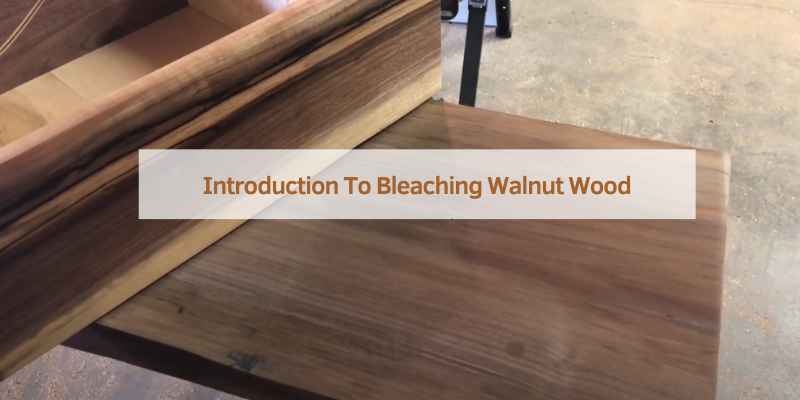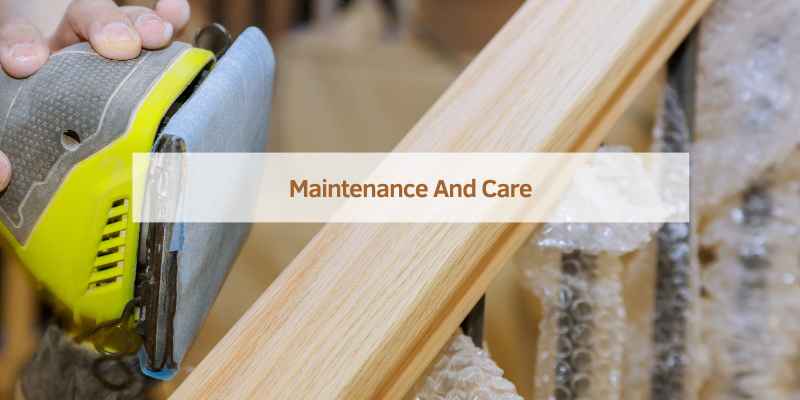To bleach walnut wood, first sand the surface, then apply wood bleach, and finally neutralize and rinse the wood. Bleaching walnut wood is a popular technique used to lighten its natural color and enhance its grain.
Whether you want to prepare the wood for a new finish or simply change its appearance, bleaching can achieve the desired results. By following the proper steps and using the right materials, you can effectively bleach walnut wood to achieve the look you desire.
We will discuss the step-by-step process of bleaching walnut wood and provide some tips to help you achieve the best results. So, if you’re looking to lighten the color of your walnut wood, read on to learn how to bleach walnut wood effectively.
Introduction To Bleaching Walnut Wood
Bleaching walnut wood is a popular technique for lightening its natural color. Learn how to effectively bleach walnut wood in this informative guide.
Why Choose Walnut Wood
Walnut wood is a popular choice for furniture and other woodworking projects due to its unique characteristics and rich, warm color. Its natural beauty and durability make it an excellent option for both traditional and modern designs.
Here are some reasons why walnut wood is a top choice:
- Rich and Dark: Walnut wood features deep, dark tones that add a touch of elegance and sophistication to any space.
- Grain Pattern: The grain pattern of walnut wood is distinctive and visually appealing, creating a unique look for your furniture.
- Durability: Walnut wood is known for its strength and durability, making it suitable for long-lasting furniture pieces.
- Ease of Workability: Walnut wood is relatively easy to work with, allowing for intricate designs and smooth finishes.
Benefits Of Bleaching
When it comes to walnut wood, bleaching can offer several benefits:
- Lighter Finish: Bleaching walnut wood can lighten its natural color, allowing you to achieve a desired shade or match it with other lighter wood tones in your space.
- Enhanced Grain Definition: Bleaching can bring out the grain pattern in walnut wood, adding depth and visual interest to your furniture.
- Uniform Appearance: By bleaching walnut wood, you can achieve a more consistent and uniform color across the entire piece, reducing any natural color variations.
- Preparation for Staining: Bleaching walnut wood can prepare it for staining, ensuring that the stain is absorbed evenly and produces the desired result.
Overall, bleaching walnut wood can provide you with greater flexibility in achieving your desired aesthetic and ensuring that your furniture stands out.

Safety First: Preparing To Bleach
Essential Safety Gear
Before starting the process of bleaching walnut wood, it’s crucial to gather the necessary safety gear to protect yourself from the potentially harmful chemicals involved.
- Protective gloves to shield your hands from direct contact with the bleach
- Safety goggles to prevent any splashes of bleach from reaching your eyes
- A well-fitted respirator or mask to avoid inhaling fumes
- Long-sleeved clothing and pants to cover your skin
Preparing The Work Area
Prior to beginning the bleaching process, it’s essential to properly prepare the work area to ensure a safe and controlled environment.
- Choose a well-ventilated space to carry out the bleaching process
- Cover the surrounding floor and furniture with protective materials to prevent accidental spills or splatters from causing damage
- Ensure proper lighting to have a clear view of the wood surface and the application of the bleach
Materials Needed For Bleaching
When bleaching walnut wood, having the right materials is crucial for achieving the desired results. The process requires specific supplies to ensure the wood is properly prepared for the bleaching solution. Let’s take a look at the essential materials needed for bleaching walnut wood.
List Of Supplies
- Gloves to protect your hands
- Safety goggles for eye protection
- Sanding block for preparing the wood surface
- Bleaching agent to lighten the wood
- Water for diluting the bleach
- Brush or sponge for applying the bleach
- Plastic sheeting to protect the work area
- Clean cloth for wiping off excess bleach
- Neutralizer to stop the bleaching process
- Finish or sealant for final protection
Choosing The Right Bleach
It is essential to select the appropriate bleach for bleaching walnut wood. Consider the type of wood and the desired lightness level when choosing a bleach.
Cleaning The Wood Surface
To bleach walnut wood, start by cleaning the surface with a soft-bristled brush and a mixture of warm water and mild soap. Sand the wood with fine-grit sandpaper, and then apply the bleach solution using a clean cloth. Let it sit for 15-20 minutes before rinsing with water and allowing the wood to dry completely.
Repeat the process if necessary to achieve the desired level of lightness.
Sanding Techniques
When bleaching walnut wood, the first step is to clean the wood surface. Once the surface is free of dirt, dust, and grime, sanding the wood becomes necessary. Sanding the wood surface with fine-grit sandpaper helps to remove the existing finish from the wood. It also helps the bleach solution to penetrate the wood. Always sand the wood in the direction of the grain to avoid scratches.
Wiping Down The Wood
After sanding the wood surface, wiping it down with a clean, damp cloth is essential. Wiping the surface helps to remove the dust and debris produced from sanding. Use a clean cloth to dry the surface completely before applying the bleach solution. A damp surface can prevent the bleach from penetrating the wood properly.
Bleaching The Wood
Bleaching the walnut wood is the next step after cleaning the wood surface. To bleach the wood, mix equal parts of bleach and water in a container. Apply the solution with a brush or a cloth and let it sit for about 15 minutes. After 15 minutes, rinse the surface with water and let it dry completely.
Final Thoughts
Cleaning the wood surface is essential when bleaching walnut wood. Sanding the surface with fine-grit sandpaper and wiping it down with a clean, damp cloth helps to prepare the surface for bleaching. After bleaching the wood, rinse it with water and let it dry completely before applying any finish. By following these steps, you can achieve a beautiful, bleached walnut wood surface.
Applying The Bleach
To bleach walnut wood, you should first sand and clean the surface. Next, apply the bleach using a brush or rag, following the manufacturer’s instructions. After letting it dry, rinse with water and sand again before applying a finish.
Now that you’ve mixed the bleach solution, it’s time to apply it to the walnut wood. The key to achieving a consistent and even result is through proper application techniques. In this section, we’ll cover the techniques you can use to ensure that the bleach is applied evenly across the surface of the wood.
Mixing The Bleach Solution
Before you can apply the bleach, you need to mix the solution. It’s important to follow the manufacturer’s instructions carefully to ensure that the solution is mixed correctly. In general, you’ll need to mix the bleach with water in a ratio of 1:4 or 1:10, depending on the strength of the bleach.
Techniques For Even Application
There are several techniques you can use to apply the bleach to the wood. Here are some of the most effective:
- Brushing: Using a brush to apply the bleach is the most common method. Choose a brush with soft bristles and apply the bleach in the direction of the grain. Be sure to apply an even coat and avoid leaving any brush marks.
- Spraying: You can also use a spray bottle to apply the bleach. This method is useful for hard-to-reach areas or when you need to cover a large surface area quickly. Be sure to spray the bleach evenly and avoid oversaturating the wood.
- Wiping: Wiping the bleach onto the wood with a cloth or sponge is another option. This technique is best for small areas or when you need to control the amount of bleach being applied. Be sure to wipe the bleach evenly and avoid leaving any streaks.
By following these techniques for even application, you can achieve a consistent and uniform result when bleaching walnut wood. Whether you choose to brush, spray, or wipe the bleach onto the wood, be sure to apply an even coat and avoid leaving any marks or streaks. With the right techniques and a little bit of practice, you can easily bleach walnut wood to achieve the desired look and finish.
Neutralizing The Bleach
To bleach walnut wood, begin by neutralizing the bleach after achieving the desired color. This step ensures the wood is safe for use and prevents any further discoloration. Properly neutralizing the bleach helps maintain the wood’s natural beauty and longevity.
Preparing The Neutralizer
To effectively neutralize the bleach on your walnut wood, it is crucial to prepare the neutralizer solution properly. The neutralizer helps restore the wood’s natural pH balance, preventing any further damage. Here’s a simple step-by-step process to prepare the neutralizer solution:
- Start by obtaining a bucket or container that is large enough to hold the solution.
- Fill the container with clean water. Make sure the water is at room temperature.
- Add a neutralizing agent to the water. One common option is a mixture of baking soda and water, with a ratio of 1 tablespoon of baking soda per 1 cup of water.
- Stir the mixture thoroughly until the baking soda is completely dissolved.
- Your neutralizer solution is now ready to be used.
Application Process
Once you have prepared the neutralizer solution, it’s time to apply it to the bleached walnut wood. Follow these steps to ensure a successful neutralization process:
- Begin by dipping a clean sponge or cloth into the neutralizer solution.
- Gently wring out any excess liquid to avoid saturating the wood.
- Apply the neutralizer solution to the bleached areas of the walnut wood.
- Work in small sections, ensuring the solution is evenly spread across the surface.
- Allow the neutralizer solution to sit on the wood for the recommended time, usually around 10 to 15 minutes.
- Using a clean cloth or sponge, wipe away the neutralizer solution from the wood.
- Rinse the area with clean water to remove any residue.
- Gently pat the wood dry with a soft towel.
By following these steps, you can effectively neutralize the bleach on your walnut wood, restoring its natural beauty without causing any further harm. Remember to always test the neutralizer solution on a small, inconspicuous area of the wood before applying it to the entire surface. This will help ensure compatibility and avoid any unwanted reactions.
Finishing Touches
To bleach walnut wood, start by sanding the surface, then apply wood bleach with a brush. Let it sit for a few minutes, then wipe off excess bleach with a damp cloth. Once dry, sand the wood again and apply a wood conditioner before staining or sealing for a beautiful finish.
Sanding After Bleaching
Smooth walnut wood surface with fine-grit sandpaper.
Remove any residue left from the bleaching process.
Applying Finish For Protection
Choose a protective finish like polyurethane or lacquer.
Apply finish evenly using a brush or cloth.
Allow the finish to dry completely before using the wood.
Maintenance And Care
To bleach walnut wood effectively, follow these simple steps: First, clean the surface thoroughly and sand it lightly. Then, apply a wood bleach solution evenly and let it sit for the recommended time. Finally, rinse off the bleach and allow the wood to dry completely before applying any finish.
With proper care and attention, you can achieve a beautiful bleached look for your walnut wood.
Regular Cleaning Tips
Clean the walnut wood surface regularly with a soft cloth.
Avoid harsh chemicals that can damage the wood.
Protecting From Damage
Apply a protective finish to seal the wood and prevent damage.
Avoid placing hot items directly on the wood surface to prevent burns.

Frequently Asked Questions
What Safety Precautions Should I Take When Bleaching Walnut Wood?
When bleaching walnut wood, always wear protective gloves, goggles, and a mask to avoid direct contact with the bleach fumes and chemicals. Work in a well-ventilated area and avoid mixing bleach with other products to prevent hazardous reactions.
Can I Use Household Bleach To Lighten Walnut Wood?
No, household bleach is not suitable for lightening walnut wood. It can cause uneven bleaching and damage the wood’s natural beauty. Instead, use a wood bleach specifically designed for lightening hardwoods like walnut to achieve the desired results effectively and safely.
How Long Should I Leave The Bleach On Walnut Wood?
The duration for leaving bleach on walnut wood varies based on the specific product used. Typically, it ranges from 5 to 15 minutes. Always refer to the manufacturer’s instructions for the precise duration and conduct a test application on a small area before proceeding with the entire surface.
Conclusion
Bleaching walnut wood can transform its appearance, creating a unique and modern look. By following the proper steps and using the right products, you can achieve the desired results. Experimenting with different techniques can help you find the perfect finish for your walnut wood projects.

